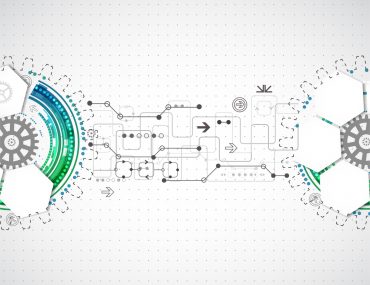
A digital twin allows a business decision-maker to test and validate a complete set of strategies and objectives across teams and make smart decisions that improve the customer experience and maximize profitability.
Fulfillment at scale requires hundreds of different decisions and managing a range of variables – from inventory levels to delivery costs to customer preferences for pickup and delivery.
Imagine being able to model conditions at peak volumes – like during the holidays –using real-time data, but without making any changes to your current system. For example, a national retailer may want to see the impact of consolidating ship-to-store packages in replenishment trucks in order to determine cost savings.
Simulations can help, but in such a complex system, small decisions can impact everything down the line. And it is impossible to get a true picture from an offline analysis. To be effective, these simulations must be modeled against real-time inventory changes happening throughout the day.
Digital twins offer an effective solution that allows omnichannel retailers to model a host of scenarios via virtual models of their production supply chain.
What Are Digital Twins and How Do They Work?
A digital twin is a virtual representation of a real-world physical product, system, or process that serves as an exact replica and digital counterpart for purposes of simulation, integration, testing, monitoring, and maintenance. In a retail application, the digital twin mirrors the existing tech stack and variables within the supply chain to model different scenarios for analysis and continuous improvement.
This virtual environment can be used in real time and regularly synchronized with the corresponding physical system. This allows retailers to test and analyze different scenarios to make business decisions that will enhance, improve, and streamline the fulfillment process and improve customer satisfaction without making any changes to existing workflows.
Who is Leading the Way?
Digital twin technology can change the game for omnichannel retailers with store fleets of between 200 to 1000+ who use their store network extensively for fulfillment via ship-to-store and Buy Online Pickup in Store (BOPIS) applications.
In today’s environment, retailers must examine and nurture their omnichannel fulfillment approach on an ongoing, rather than a project, basis. They must constantly evaluate the business value and technology modernization in tandem. But testing changes on the live production system can impact the current customer experience. Given the complexity of their processes, small changes can make a big impact. Retailers can’t afford to negatively impact real-world customers while they analyze changes. Digital twins allow them to model the impact those changes will have on existing variables in the process.
Digital and software companies pioneered advanced engineering practices and have innovated the software development cycle with technologies like digital twins, but the retail industry is still in the preliminary stages of adopting some of these practices. Forward-thinking, national omnichannel retailers with complex fulfillment needs are now adopting this technology to manage and measure the impact of changes to their processes. Using digital twin technology to test different approaches and scenarios, retailers have seen results of 15 percent savings on freight and a reduction in transit times of up to 2 days.
See also: Retail is the Ultimate Testing Ground for AI/ML
Digital Twins in Action
Holidays, promotions, and sales can drive volumes up to peak levels quickly. A rapid increase in sales driven by an event can also increase the cost of meeting customer expectations. Modeling different variables – inventory turn, shipment consolidation, BOPIS, and more – can allow retailers to test various methods for cost savings and the impact on service levels.
For example, the retailer may want to test increases to local availability of BOPIS during the holiday shopping season and model the impact on order splits if they change sourcing rules to more aggressively use store inventory as opposed to distribution centers. The digital twin will allow them to measure and analyze impacts across the value chain, from splits to rate savings on delivery. With this information in hand, the retailer can make decisions based on real-world data and behaviors and maximize both top-line and bottom-line revenue opportunities.
Managing Business Performance With Minimal Impact and Maximum Visibility
Replicating current operations with a digital twin allows retailers to analyze current business performance and the likely impact of future stressors on the value chain. In an IoT-powered business world, digital twins are already delivering value in industries like manufacturing and construction. In fact, the global digital twin market across all industries is expected to reach $73.5B by 2027. Now, retailers are beginning to see the value of digital twins for modeling the impact of future business decisions without degrading the existing customer experience.
While Business Intelligence data reporting can help retailers measure the impact of operations decisions after the fact, a digital twin changes the game by offering insight into potential future outcomes based on forthcoming actions. With this ability, retail strategy professionals can react to trends and strategic threats, adjust processes to save time and money, and react to customer needs and desires quickly and effectively.
With a digital twin, retailers are free to experiment with different scenarios – including bold or innovative approaches to fulfillment – with very little risk and receive insight into the impact in a matter of minutes. The ability to simulate thousands of potential scenarios allows national retailers to quickly and effectively meet the expectations of consumers who have become accustomed to the myriad of fulfillment options and speeds available via online shopping applications.
Retail strategy decisions are often made in silos – with the marketing, channel, and other teams driven by their own objectives. This can lead to duplication of effort and increased cost and could potentially negatively affect the customer experience. A digital twin allows the business decision-maker to test and validate a complete set of strategies and objectives across teams and make smart business decisions that improve the customer experience and maximize profitability.




























